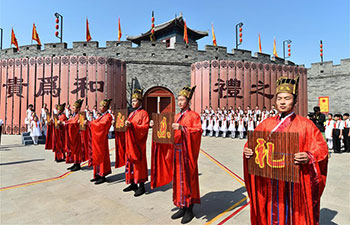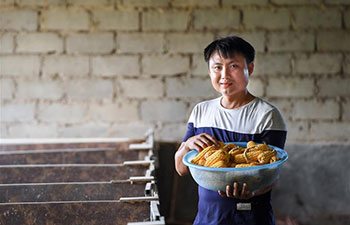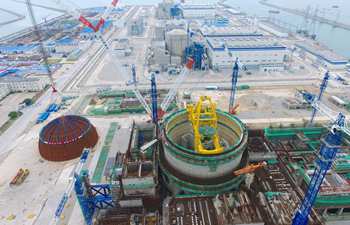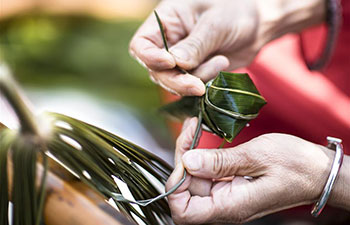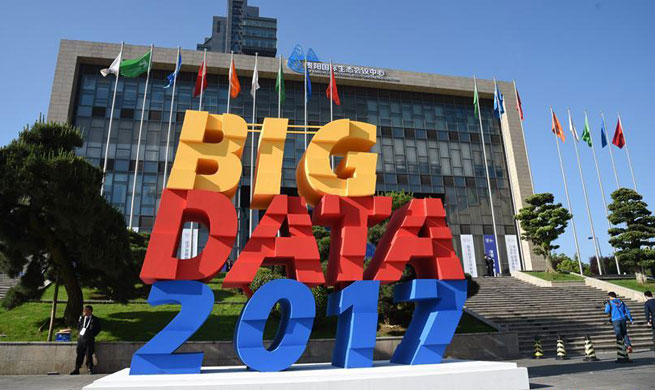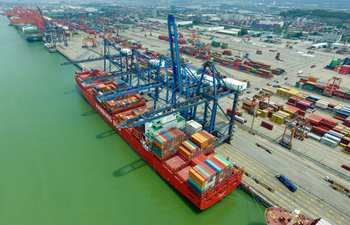BEIJING, May 26 (Xinhua) -- With just 100 days until the Ninth BRICS Summit in Xiamen in September, the world is keen to know if the summit can put a new shine on emerging markets and developing countries amid a sluggish global economic recovery and setbacks in globalization.
Under the theme "BRICS: Stronger Partnership for a Brighter Future," the summit will gather leaders from countries representing 40 percent of the world population and 25 percent of global GDP.
Coined by former Goldman Sachs economist Jim O'Neill in 2001, the term "BRIC" refers to Brazil, Russia, India and China, four emerging markets with fast growth and great potential.
In 2006, foreign ministers from those countries met in New York, formally starting the BRIC grouping. South Africa joined the group in 2010, the acronym changing to BRICS.
It is fair to say that China has always pinned high hopes on BRICS for emerging markets with which it finds natural common ground.
While the English acronym is catchy, the Chinese translation -- four characters that bear the literal meaning "gold bricks countries" -- conveys confidence in the future.
That sense of confidence is backed by concrete growth.
Originating at the height of the global financial crisis, the group has managed to exceed even the bullish expectations of O'Neill.
Together, the five countries have contributed to more than half of global growth in the past ten years, and the inclusion of South Africa gave the group more political weight when speaking up for the emerging world on the international stage.
It has truly been a "golden decade."
But BRICS countries are not without problems, particularly as the world struggles to close a widening development gap while protectionism rears its ugly head.
While China and India are expected to see their economies expand by around 6.5 percent and 7.2 percent, respectively, this year, Russia, Brazil and South Africa, which depend heavily on resources, are still struggling to escape the mire of economic recession.
To help finance infrastructure and sustainable development projects in BRICS and other emerging economies and developing countries, China co-founded the BRICS New Development Bank (NDB) in 2014 with its headquarters in Shanghai.
Fully operational in 2016, that year the bank approved loans involving financial assistance of over 1.5 billion U.S. dollars for projects in green and renewable energy, and transport.
Meanwhile, China does not only aim for development within BRICS, but for all nations, with its Belt and Road Initiative.
Named after the historic Silk Road, the Belt and Road Initiative was proposed by Chinese President Xi Jinping in 2013 to better connect countries along and beyond the ancient Silk Road and chart new territories for international cooperation.
Most countries along the Belt and Road are developing nations eager for better economic performance and regional economic integration.
By linking countries and regions that account for about 60 percent of the world's population and 30 percent its GDP, the initiative is a perfect example of China sharing its wisdom and solutions for global growth and governance.
As the Belt and Road Forum for International Cooperation concluded earlier this month, Xi promised the equivalent of 380 billion yuan in loans for infrastructure and development projects from Chinese policy banks, and 60 billion yuan in aid to developing countries and international organizations.
So far, the Belt and Road Initiative has received a warm welcome from BRICS countries.
With such inclusive platforms as the Belt and Road and NDB, China will no doubt help add glitter to the BRICS of gold, building a new platform for south-south cooperation.





